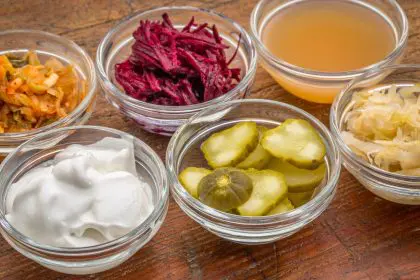For people with diabetes, managing blood sugar levels is an ongoing priority. This often involves careful meal planning and understanding how foods impact your body’s glucose response. While frozen food can seem convenient, diabetics must be cautious when including it in their diet.
Understanding the Challenges with Frozen Meals
Frozen meals can be tempting for diabetics due to their ease and perceived speed. However, several factors can make them less than ideal for managing blood sugar:
- Hidden Sugars: Many frozen meals are surprisingly high in added sugars. These sugars can cause blood sugar spikes, which can be detrimental for diabetics. Reading food labels carefully and prioritizing options with low sugar content is crucial.
- High Sodium: Frozen meals often contain significant amounts of sodium to enhance flavor and act as a preservative. Excessive sodium intake can contribute to high blood pressure, a risk factor for heart disease, which is a common complication of diabetes.
- Uncertain Carbohydrate Content: Frozen meals can be deceiving regarding carbohydrates. While some may appear healthy based on ingredient lists, they can pack a significant carbohydrate punch. Understanding total carbohydrate content and opting for meals with lower amounts is essential.
- Limited Control Over Ingredients: Frozen options offer little control over ingredients, unlike preparing meals from scratch. This can make it challenging to tailor meals to specific dietary needs and preferences.
Making Smart Choices with Frozen Foods
While frozen meals aren’t always the best choice, there are ways for diabetics to incorporate them occasionally with a focus on healthy selections:
- Scrutinize Food Labels: Become a label-reading pro! Pay attention to serving sizes, sugar content, total carbohydrates, and sodium levels. Choose options with lower sugar and sodium content and prioritize meals with fiber, which can help regulate blood sugar absorption.
- Focus on Whole Foods: Look for frozen meals that contain whole food ingredients like vegetables, lean protein sources, and whole grains. These options are generally healthier and provide more balanced nutrition.
- Consider Ingredients Lists: Ingredients are listed by weight, with the most prominent ingredients listed first. Choose meals with vegetables or lean protein sources at the top of the list.
- Portion Control is Key: Even seemingly healthy frozen meals can be high in calories. Pay attention to serving sizes and avoid overeating. Consider using a smaller plate and focusing on filling half your plate with non-starchy vegetables.
Beyond Frozen Meals: Alternatives for Busy Diabetics
While frozen meals can be convenient, there are plenty of healthy and delicious alternatives that require minimal prep time:
- Pre-cut Vegetables: Keep pre-cut vegetables like broccoli florets, peppers, and carrots on hand for quick and easy steaming or roasting.
- Frozen Vegetables: Frozen vegetables are a great option and often retain more nutrients than their fresh counterparts. Steam or stir-fry frozen vegetables for a quick and healthy side dish.
- Canned Beans and Lentils: Canned, low-sodium beans and lentils are a fantastic source of protein and fiber. Rinse them well before using them to remove some of the sodium content.
- Leftovers: Planning meals with leftovers in mind can save time during the week. Cook a larger batch of a healthy dish and portion it out for future lunches or dinners.
- Meal Prep: Prepare ingredients daily for quick and easy meals. Marinate chicken breasts, chop vegetables, and cook brown rice to assemble healthy meals throughout the week.
Prioritizing a Diabetic-Friendly Diet
By understanding the challenges of frozen meals and implementing alternative strategies, diabetics can manage their blood sugar effectively. Focusing on whole, unprocessed foods, reading labels carefully, and prioritizing portion control is essential for a healthy diabetic diet. Remember, convenience shouldn’t come at the expense of your health. There are many ways to create delicious and nutritious meals that fit your busy lifestyle and support your diabetes management.
This story was created using AI technology.













